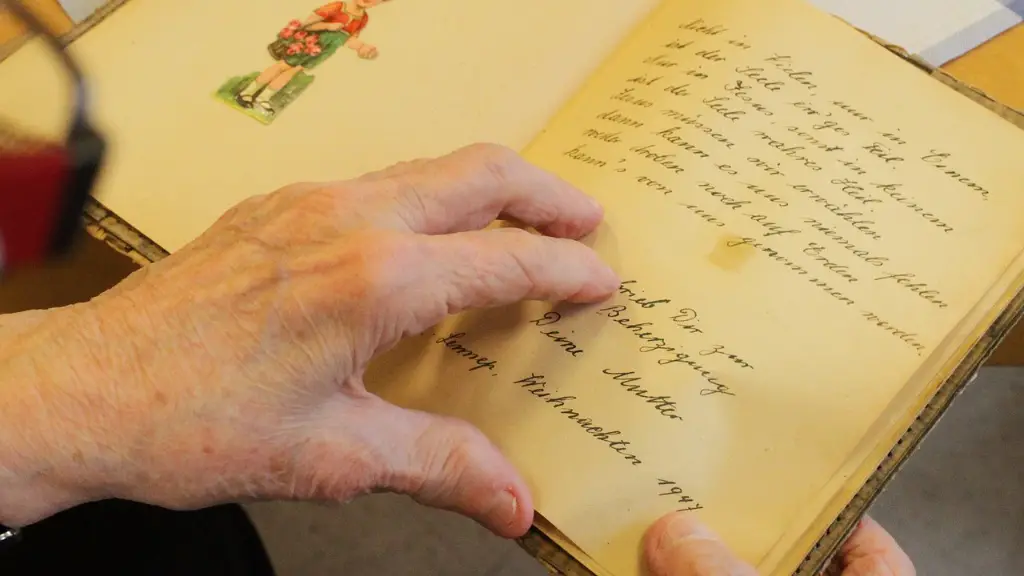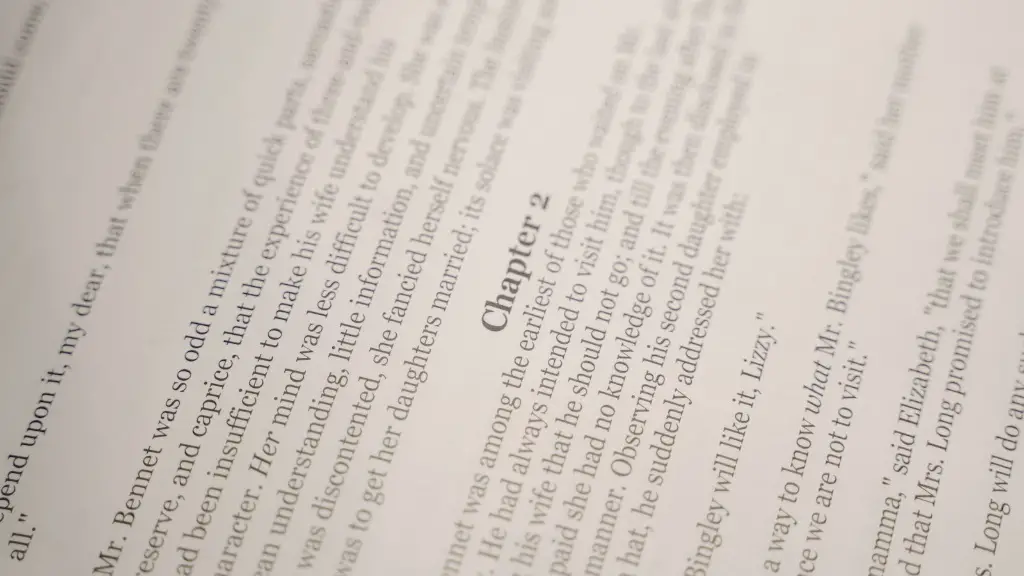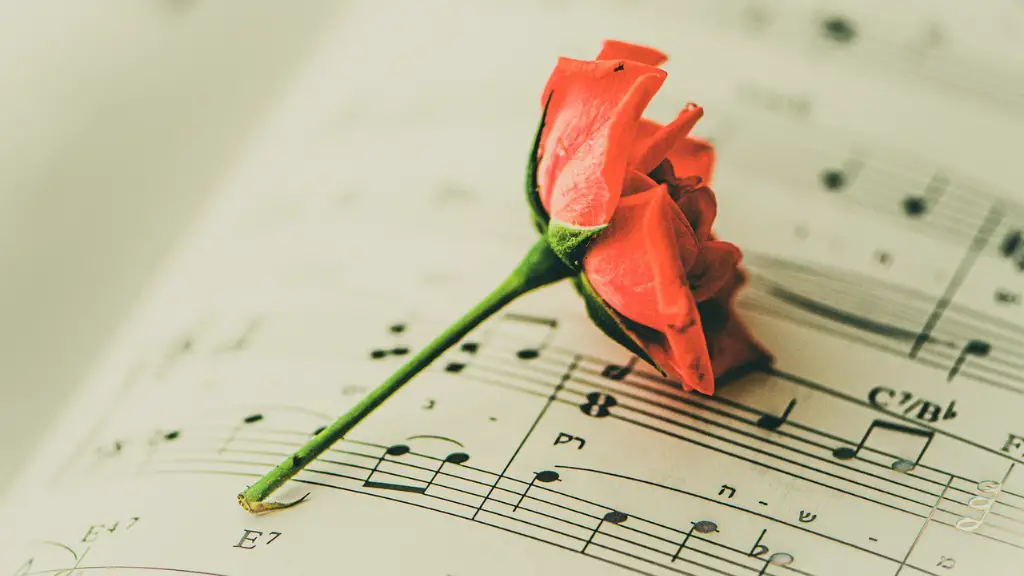Robert Frost’s poetry has been commended time and time again for its ability to stand the test of time. Though Frost’s writing has often been praised for its innovation and freshness, there are also certain aspects of his work that are undeniably traditional in nature. Through their timeless themes, creative meter and rhyme schemes, and memorable imagery, Frost’s poetry encapsulates some classic elements of poetry and literature from the past.
At its core, Frost’s work is often inspired by nature. Frost was a master of exploring and elucidating the beauty of nature in his poetry. His choice of early twentieth-century American rural settings and themes, combined with his personal take on the universal struggles of life and death, are combined to create classic works of poetry. Even Frost’s imagistic language, which is often directly lifted from the natural world, contains elements that have been seen since ancient times.
Frost’s use of meter and rhyme schemes is also quite traditional. His work is characterized by a cyclical structure and a penchant for classic iambic, trochaic and anapestic meters. He often made use of traditional rhyme schemes such as the AABB and ABAB structures, and frequently used internal rhyme and alliteration to give his poems a succinct and powerful edge. All of these elements come together to make Frost’s poetry reminiscent of classic works of poetry, with the same sense of rhythm and elegance often evident from composers from centuries past.
Frost also typically wrote in stanzaic form, often with four or five line stanzas. This has been a common form of poetic composition since the ancient Greeks, and is seen in countless works of poetry to this day. His use of form also often mirrors classic epics and ballads, and his works are typically straightforward and concise in their delivery. This can be seen in the famous poem “The Road Not Taken”, in which Frost deftly conveys a clear and powerful message between only four stanzas. This is an example of a classically told story that has been used since ancient times, and Frost’s use of this form is a testament to its power and timelessness.
Though Frost’s work is unquestionably innovative and original, there are aspects of his poetry that are undeniably traditional. His intimate understanding of the beauty of nature and his love of cyclical structures and traditional stanzas and meters bring an air of classic poetry to his work. Through his creative use of imagery and form, Frost’s poetry transcends time to leave a timeless impression on the reader.
Themes in Robert Frost Poetry
The themes found in Robert Frost’s poetry are perhaps one of the most traditional aspects of his work. Frost was well known for his ability to capture the struggles and joys of life through his writing, and he wove these into his works in an almost classical way. His poems often dealt with topics such as death, birth, relationships and the beauty of nature. This is a collection of themes that have been found in the poetry of different cultures since the dawn of poetry, and Frost was able to use his own style to create works of literature that resonated with modern audiences.
Frost was also adept at exploring the conflicts between humans and nature. He often used the natural world as a metaphor for life and his works explored the relationships between humans and animals, and between humans and the harshness of nature. His works often served as heightened reflections of the human condition, and used nature to make commentary on the struggles of life. This is a theme that has been seen since ancient times, and Frost’s modern take on this classic theme is both thoughtful and powerful.
Frost’s work was also deeply rooted in New England history and character. He had a strong connection to the pastoral landscapes of his home state, and often drew from the scenes of rural New England to tell his stories. He used his rural setting to explore major themes of life such as death, love, regret and the cycles of nature. This direct tie to the New England landscape has helped to create a timeless yet still modern feel to his work.
In his writings, Frost often gravitated towards the contemplation of life’s essentials rather than attempting to reinvent literature as he knew it. His poems also often explored the greater themes of both human suffering and mortality. These same universal themes have been around for centuries, and Frost was able to explore these topics in an innovative and creative way.
Though Frost’s work is commonly seen as innovative and original, his themes and settings are obviously traditional in nature. His poems come from a rich heritage of classic themes and settings, and his personal take on these has allowed him to create an enchanting and timeless collection of works.
Metaphors and Similes in Robert Frost Poetry
Robert Frost was well known for his skillful use of metaphor and simile in his poetry. His works often featured extended metaphors within which the descriptions of the natural world could represent a more pervasive meaning. Frost was able to use apt and original similes to convey powerful messages within the limited scope of his poems. This use of figurative language can be seen as both an attempt to incorporate the traditional aspects of poetry, and a powerful way to convey a strong message.
Frost’s metaphors often related to prominent themes in his works, such as death, nature and religion. For example, in his poem “The Road Not Taken”, he uses a metaphor of a life-changing choice being like a road to describe a difficult decision. Through this metaphor, Frost was able to explore the internal struggles of a person faced with life’s questions. This type of metaphor has been used in literature for centuries, and Frost’s unique approach has allowed him to bring this traditional theme to life and convey a powerful message.
The similes and metaphors in Frost’s works are often direct and to the point. He was able to use a few choice words to quickly evoke images and create a strong feeling. His similes often related to the simple beauty found in nature and the emotions associated with it. For example, in his poem “Stopping by Woods on a Snowy Evening”, Frost uses the phrase “the darkest evening of the year” to describe a dark winter’s evening and evoke feelings of loneliness and dread. This simple yet powerful simile is in line with Frost’s style of direct and powerful writing.
The metaphors and similes found in Robert Frost’s poetry are traditional in their own way. His skillful use of figurative language stands as a testament to the power of poetry, and his ability to create powerful images and stories within only a few words. Frost’s similes and metaphors reflect a classic use of language, and their timelessness within his works is evidence of the power of this tradition.
Rhyme Schemes in Robert Frost Poetry
The rhyme schemes used by Robert Frost are often quite traditional in nature. His works most commonly use AABB, AABB, AABBCC and ABAB rhyme schemes, which were all in use since before the 1700s. His works were also sometimes characterized by end-stopped lines and internal rhyme, reflecting the classic forms of poetry. Frost’s use of rhyme and meter gave his poems a cyclical nature, and echoes of classic works of poetry could often be heard in his work.
Frost was also experimental in his use of rhyme, often incorporating slant and half-rhymes into his works. Slant rhyme has been used by poets for centuries, often to introduce extra nuance to a poem or to create tension and rhyme when none is expected. Frost used this method to give his works an extra edge and unpredictable moments that followed the rules of classic poetic forms.
Frost was also a master of assonance, which is the repetition of vowel sounds in close succession. This is a form of rhyme pattern that has been seen in poetry since ancient times, and Frost’s skillful use of this technique gave his work a balanced and cadenced feel. Through his masterful use of assonance, Frost was able to create a sturdy feet and rhythm in his works.
The rhyme schemes used by Robert Frost are both traditional and original. His skillful use of classic verse form and creative use of slant and half-rhymes helped to set his work apart from the crowd and give it a unique and timeless feel. His works of poetry are classically structured and beautifully balanced, evoking a sense of timelessness while still being fresh and original.
Imagery in Robert Frost Poetry
Robert Frost’s use of imagery was a key element in his works of poetry. He was known for his ability to capture a vivid picture with a few choice words, often creating stunning images with his precise and meaningful language. His use of imagery was often inspired by nature, which is a traditional source that has been seen in poetry for centuries.
In Frost’s works, nature was often used as both a physical and a psychological setting. His vivid use of language helped to bring the natural world to life and evoke powerful emotions in the reader. This often extended beyond the natural world to include the human experience as well. Frost often used the beauty and harshness of nature to represent the conflicting feelings of life and death, often creating strong visuals to convey these ideas.
Frost was also adept at using concrete imagery to evoke powerful emotion. This can be seen in his poem “Fire and Ice”, which uses vivid descriptions of both fire and ice to explore the duality of human nature. Through this extended metaphor, Frost was able to create a powerful and evocative image of the human struggle.
The imagery found in Robert Frost’s poetry is both traditional and modern. His skillful use of concrete imagery inspired by nature is both timeless and thought provoking. His work often captures a moment, allowing the reader to revel in the beauty of the imagery. Frost’s use of imagery is both classical and fresh, creating a unique and timeless impression on the reader.
Sound in Robert Frost Poetry
The sound of Robert Frost’s poetry is also often quite traditional. His poems are often characterized by a steady rhythm of iambic, anapestic and trochaic meters, which can be seen in works of poetry from centuries past. Frost was also known for his skillful use of assonance and alliteration, which contributed to a cyclical and musical quality in his works.
The meters used by Frost have been used since ancient and medieval times, and his skillful use of them has allowed him to create modern works of poetry that still sound traditional. His poems often featured a recognizable repeated feet and a tight rhyme, which gave them a strong and authoritative feel. Through his use of these traditional sounding meters, Frost was able to bring an anachronistic feel to his works while still using modern semantics and syntax.
Frost’s mesmerizing use of sound also allowed him to create an effective mood in his works. Through the use of certain rhythms and rhyme, he was able to evoke feelings of mystery or dread, depending on the poem. This all aided in giving his works a traditional feel, creating emotive and timeless works of poetry.
The sound of Robert Frost’s poetry is often quietly traditional. His skillful use of meter and rhyme gives his works a timeless feel, and the assonance and alliteration he often used helped to create a lyrical quality in his work. Frost was able to create modern works of poetry that still possess the traditional sound of poetry from centuries past.





